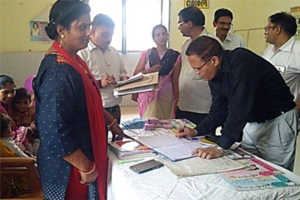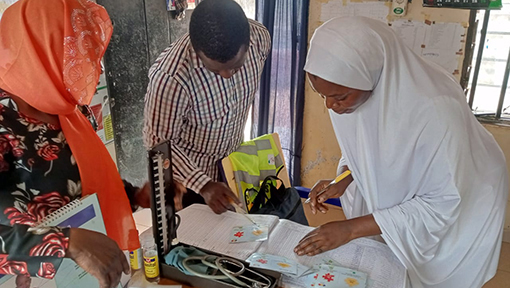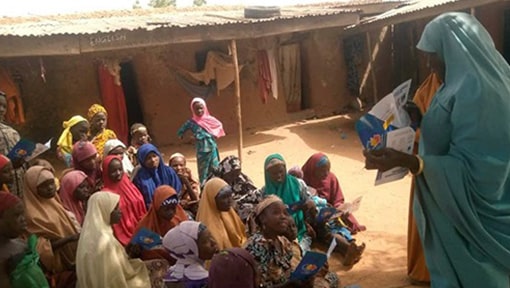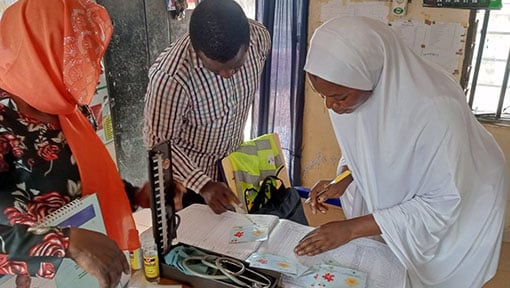In Their Own Words: The Secret to Success in Kanpur Is to Demonstrate Quick Results
Contributors: Anil Dwivedi, Meenakshi Dikshit and Deepti Mathur
 Kanpur city in Uttar Pradesh (UP) is part of The Challenge Initiative for Healthy Cities (TCIHC) in India. Anil Dwivedi, who serves as the TCIHC City Manager for Kanpur, reflects on how this city began implementing TCIHC’s high-impact approaches and reached all 50 urban primary health centers in just six months.
Kanpur city in Uttar Pradesh (UP) is part of The Challenge Initiative for Healthy Cities (TCIHC) in India. Anil Dwivedi, who serves as the TCIHC City Manager for Kanpur, reflects on how this city began implementing TCIHC’s high-impact approaches and reached all 50 urban primary health centers in just six months.
“I was filled with equal and opposite feelings of thrill, excitement, nervousness and consciousness all at the same time when chosen for this role of City Manager for Kanpur under the TCIHC program. Many cities of UP were already implementing TCIHC’s high-impact approaches and I was asked to draw on the success and high performance benchmarks of the first five TCIHC cities as examples of what has worked well and what can be done differently. During my orientation, I was given the following four straightforward guidance tips for bringing quality family planning services to any city at an accelerated pace:
- Become well-versed with high-impact approaches
- Build strong rapport with the city government
- Roll out fixed-day static services or family planning days (FDS/FPD)
- Organize a city-level health stakeholders’ consultation
“I understood that like other TCIHC implementing cities, I had to focus on facilitating the rollout of FDS/FPD services throughout Kanpur’s UPHCs (urban primary health centers), and bring all stakeholders together to develop a city health plan under the city stakeholder consultation. Mind you, Kanpur had 50 UPHCs, two to three times more than an average UP city. In my first few initial meetings with city officials, I kept discussing the FDS/FPD approach. But, all of them were hesitant because of reasons like lack of trained staff, instruments, supply, follow-up and, of course, client mobilization. Further, they’d ask: ‘Why FDS/FPD? Clients can seek family planning services any day either at the UPHC or at higher level facilities, so why invest efforts in organizing FDS/FPD.’ The FDS/FPD tool came to my rescue and I narrated successful examples of many other cities which had similar issues and shared mindsets and yet were able to demonstrate results from FDS/FPD. After regular discussions with the National Urban Health Mission (NUHM) Nodal Officer, he was convinced and submitted a request to the Chief Medical Officer (CMO).
The names of three ready-to-start facilities were shared with the CMO, and he gave permission to demonstrate results by organizing FDS/FPD at these three facilities. Thus, I got the required letter for these three facilities from the CMO on April 2, 2018. This was a stepping stone on a lightening speed journey ahead.
“Meanwhile, with the help of TCIHC teammates, a city-level health stakeholders’ consultation was organized on April 26, 2018. In this meeting, I remember there was a marathon six-hour long discussion on urban health and urban family planning, where the suggestion of having FDS/FPD at the UPHC level was brought up. Many Medical-Officers-in-Charge (MOICs) of the facilities expressed interest in having FDS at their facilities. Soon thereafter, on May 4, 2018, we got a second letter issued from the CMO to start FDS in 22 additional facilities.
“When the Joint Director Family Planning from Directorate of Family Welfare visited FDS sites in May, it was very encouraging for the city health administration and motivated facility in-charges. This senior-level visit also generated a certain level of awareness raising of the FDS as well as attracted media attention. We toiled hard for the next two months and facilitated FDS/FPD in 22 additional facilities by the end of June. This set the path for us to approach the CMO with results from 25 facilities. He said, ‘We at government don’t expect things to be quick. Things often move a bit slow. But, when we find out that something good and workable produces results quickly we take it into the system—which is what we have done in case of FDS. This is now part of UPHC Charter and going to sustain forever. The system works, not individuals. So, when something is introduced or added into the system, no one needs to worry about its sustainability. This is not only going to sustain but evolve further as we bring new contraceptives to these facilities as well.’
“We were able to get the mandate from the CMO to cover all 50 facilities with FDS and by August, all 50 were implementing FDS/FPD.






